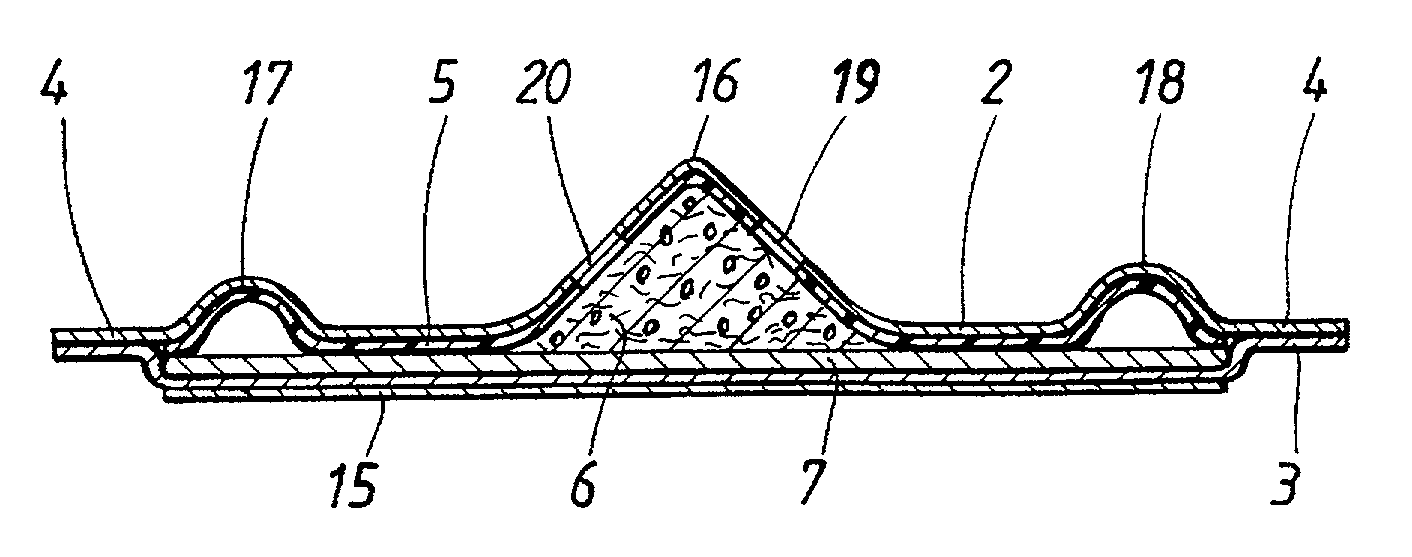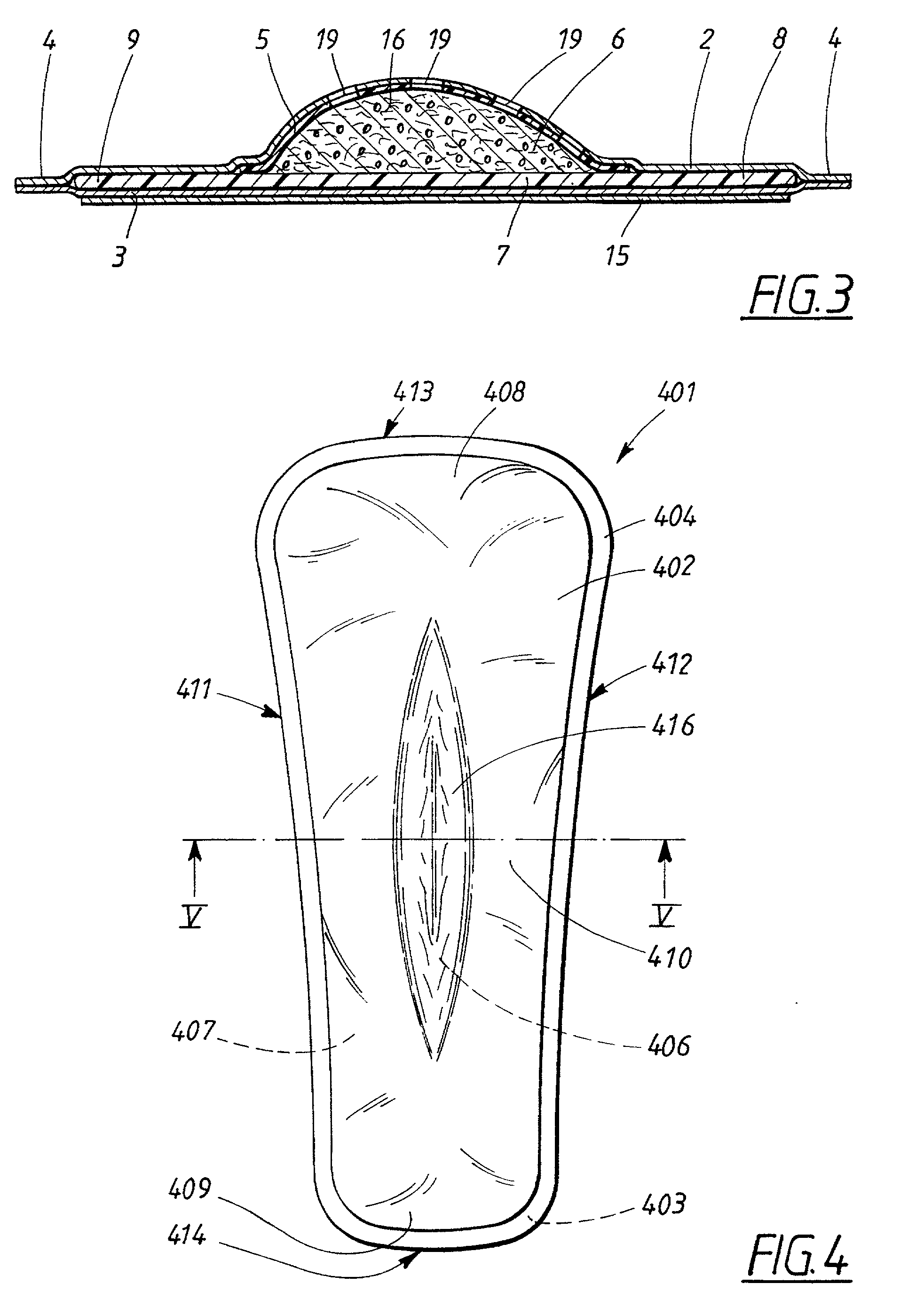Absorbent article with a raised portion
a technology of absorbent articles and spherical parts, which is applied in the field of absorbent articles, can solve the problems of body fluid leakage past the longitudinal side edges of the articles, unfavorable user safety, and risk of soiling the clothing of users
- Summary
- Abstract
- Description
- Claims
- Application Information
AI Technical Summary
Benefits of technology
Problems solved by technology
Method used
Image
Examples
Embodiment Construction
:
[0032] The sanitary napkin 1 shown in FIGS. 1 and 2 comprises a liquid-pervious cover layer 2, arranged on the side of the sanitary napkin 1 which during use is intended to be facing the user. The liquid-pervious cover layer 2 suitably consists of soft, skin-friendly material. Examples of useful liquid-pervious cover materials are different types of non-woven fibre fabrics, so-called nonwoven materials. Other occurring liquid-pervious cover materials are perforated plastic films, scrims, knitted or woven fabrics, and combinations and laminates of the listed material types.
[0033] The sanitary napkin 1 further comprises a liquid-impervious cover layer 3, arranged at the side of the sanitary napkin 1 which during use is intended to be facing away from the user. Usually, a thin plastic film is used as a liquid-impervious cover layer 3. It is, however, also possible to use liquid-pervious material layers which are coated with a liquid-impervious material. Other treatments, such as therm...
PUM
 Login to View More
Login to View More Abstract
Description
Claims
Application Information
 Login to View More
Login to View More - R&D
- Intellectual Property
- Life Sciences
- Materials
- Tech Scout
- Unparalleled Data Quality
- Higher Quality Content
- 60% Fewer Hallucinations
Browse by: Latest US Patents, China's latest patents, Technical Efficacy Thesaurus, Application Domain, Technology Topic, Popular Technical Reports.
© 2025 PatSnap. All rights reserved.Legal|Privacy policy|Modern Slavery Act Transparency Statement|Sitemap|About US| Contact US: help@patsnap.com



